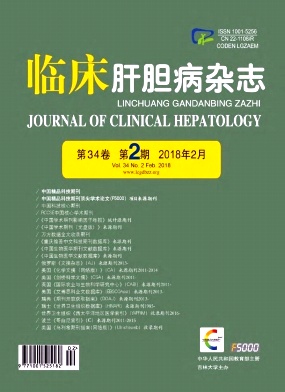Objective To investigate the clinical features of drug-induced liver injury (DILI) by descriptive analysis.Methods A retrospective analysis was performed for the clinical data of 445 patients who were diagnosed with DILI in Shuguang Hospital Affiliated to Shanghai University of Traditional Chinese Medicine, Putuo Hospital Affiliated to Shanghai University of Traditional Chinese Medicine, and Tongren Hospital Affiliated to Shanghai Jiao Tong University School of Medicine from January 2012 to December 2016, including medical history, signs and symptoms, examination results, treatment, and prognosis.The clinical features of DILI were analyzed.The continuous data were expressed as median and inter-quartile range M (P25-P75) , and the Kruskal-Wallis H test was used for comparison of continuous data between groups; the chi-square test was used for comparison of categorical data between groups.Results Among all 445 patients, there were 136 male patients (30.56%) and 309 female patients (69.44%) , and most of the patients were aged 40-69 years.Of all patients, 194 (43.6%) had DILI induced by Western medicine, 140 (31.46%) had DILI induced by traditional Chinese medicine, 92 (20.67%) had DILI induced by Western medicine and traditional Chinese medicine, and 19 (4.27%) had DILI induced by healthcare products.Traditional Chinese medicine which induced DILI included Fallopia multiflora and its preparation, Xianling Gubao capsules, and Longbishu capsules, and Western medicine which induced DILI included cardiovascular drugs, antimicrobial agents, antipyretic and analgesic drugs, antitumor drugs, and antitubercular agents.Major clinical symptoms included weakness, poor appetite, jaundice, and nausea, among which weakness was the most common symptom, seen in 65.17% of all patients.Of all patients, 70.11% had hepatocellular injury type.There were significant differences in peak values of alanine aminotransferase (ALT) , aspartate aminotransferase (AST) , alkaline phosphatase, total bilirubin (TBil) , and international normalized ratio between patients with different types of DILI (t = 153.584, 97.366, 27.781, 24.177 and 6.236, all P < 0.05) , and the patients with liver injury induced by traditional Chinese medicine had significantly higher peak values of ALT, AST, and TBil than those with liver injury induced by Western medicine (all P < 0.05) .There was significant differences in liver injury score between patients with different types of DILI (χ2= 26.848, P < 0.001) .Of all patients, 98.65% achieved improvement, and there was no significant difference in prognosis between the patients with liver injury induced by traditional Chinese medicine and those with liver injury induced by Western medicine (χ2= 3.663, P > 0.05) .Conclusion DILI is commonly seen in female patients and middle-aged and elderly patients.Compared with those with liver injury induced by Western medicine, the patients with liver injury induced by traditional Chinese medicine have significantly greater abnormalities of biochemical parameters.Most of the patients with DILI have good prognosis.







 DownLoad:
DownLoad: